
–– The newsletter on wine and wine travel ––
–– Read by wine lovers and wine professionals all over the world ––
–– On the internet since 1996 ––
The heroes of the vineyards
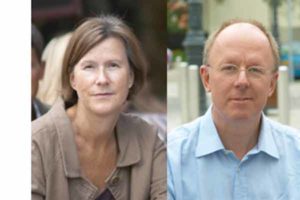 There is something called heroic viticulture. It is, for instance, vineyards on steep slopes, at high altitudes, on narrow terraces, on dry, windy islands. Here the wine world’s superheroes toil. The more difficult the terrain, the greater the work effort. Steep slopes more often suffer from a lack of water than vineyards on the plains. Yields will be small.
There is something called heroic viticulture. It is, for instance, vineyards on steep slopes, at high altitudes, on narrow terraces, on dry, windy islands. Here the wine world’s superheroes toil. The more difficult the terrain, the greater the work effort. Steep slopes more often suffer from a lack of water than vineyards on the plains. Yields will be small.
But these problems can affect any vineyard today.
The heroic wines are sometimes niche wines made in small quantities with prices accordingly. And if the winemaker gets paid for his hardships, then it’s easier to be heroic. Customers help to make cultivation financially sustainable.
Where are the most difficult places to make wine? It may be on the steep slopes or on windy islands in the Atlantic. But it can also be in a humid climate with a high risk of fungal diseases or a region with recurring drought.
But should you grow vines where it is not suitable? Some regions suffer routinely from fungal diseases, and regular spraying is inevitable. Why have vineyards there? Well, if downy and powdery mildew had existed from the beginning, maybe there hadn’t been any. These two severe fungal diseases came to Europe only during the second half of the 19th century. By then, much of the vineyard map was already drawn. And the producers found solutions that they were happy with, spraying with copper and sulphur, so they continued.
Then came synthetic fungicides as effective alternatives. Today, researchers are working on finding other and presumably better solutions than the two previous ones. This is what happens all the time in the wine industry. The climate is changing – not least, more regions are affected by severe drought – and diseases and pests are spreading from other crops, regions and countries. But technology is also evolving. Today, how much water the vines need can be measured with sophisticated methods. With clone selection and crossings, you can obtain grape varieties that can withstand drought and fungal attacks better.
Adaptation and flexibility are the keywords, and this applies to producers, consumers and rule-makers alike.
We do not intend to nominate any heroes. All wine regions in the world have their problems. “That’s the life of a farmer,” said Ruki Väänänen in Bordeaux philosophically when I spoke to him the other day about a violent hailstorm in 2018. It affected his, and only his, vineyard and destroyed 75% of his harvest. There is no pesticide against that.
C’est la vie.
Wanderlust? Wanderlust!
Things are going in the right direction. The weather too. We are longing to go out into the vineyards. There hasn’t been much of that in the last year. Only two tours, Britt in the Douro Valley and Per in Piedmont, in a whole year. We long to visit wineries and wine cellars, taste good wines, eat good food.
Maybe it’s the same with you. Would it not be great to meet some winemakers, walk among the vines and the wine barrels?
When you start having the urge to travel to the wine regions, you know that we are here.
You’d have a hard time finding a wine tour operator who knows more about wine than we do. We have the contacts among the wine producers. Many of them say, when we visit them for the first time, “so nice to see you, I have been reading what you write for a long time”.
We want you to have the most incredible and memorable experience possible. We have no other ulterior motives with our travels. We do not want you to buy certain wines. We do not do this because we want to advertise a wine region or a wine producer. We just want to give you an unforgettable wine tour.
So, when you start to get the urge to travel to a wine district.
Remember that we are here for you.
Enjoy the Brief!
Britt & Per
If you appreciate what we do, you can help us:Tell your friends about the Brief or send it to them.
Like us and follow us on social media:
What’s on at BKWine Tours
BKWine is also one of the world’s leading wine tour operators. Here’s what we currently have on our scheduled wine tour program:
- Champagne and Bordeaux, September 23 – October 1 2021
- Champagne, September 23-27, 2021
- Bordeaux, September 27 – October 1, 2021
- Chile-Argentina, January 17-30, 2022
- South Africa, February 9-18, 2022
- New Zealand, March 10-25, 2022
We also make custom designed wine tours.
We’re different than most other wine tour operators. We are people who know wine inside out, who travel constantly in wine regions, who write award winning books about wine. Who do this out of passion. Our tours are different from others. More in wine tours: BKWineTours.com.
Read our books
We have written several wine books, ten at the last count. Unfortunately, only one of them has been translated to English; the others are (so far) only available in Swedish. This is the one that is available in English:
All our books are on wine, but on different subjects: wines of the Languedoc, wine growing and wine making, the wines of France, Tuscany, Bordeaux, Piedmont, Burgundy, Champagne. Several have won prestigious prizes and awards from Gourmand International, OIV and others. Read more on our wine books.
News from the world of wineWhat’s been happening in the world of wine recently. |
Swedish wine growers create a new trade association
|
The 2021 harvest in the southern hemisphere
Australia produced 12.5 million hl, an increase of 18% compared to 2020, which means that the country is back to normal levels after having had low figures for three years in a row. New Zealand, with 3 million hl, decreased its production by 8.8% due to late spring frost and cool spring weather. Some producers are expecting a shortage of sauvignon blanc. South Africa’s production increased by 0.7% to 10.4 million. hl. The vineyards seem to have recovered from the severe drought that ended the winter of 2019-2020. Read more: oiv Travel: To go on a wine tour to the southern hemisphere is a once-in-a-lifetime experience. Join us at BKWine on a tour to South Africa, Chile-Argentina or New Zealand. The top wine tours. |
Climate change requires a suitable rootstock; Burgundy does research
The average temperature in Burgundy has increased by one degree C since 1987. Winter days with freezing temperatures have decreased, and days with over 25 degrees C have increased. Winters are wetter, and summers are drier. Read more bivb (pdf) |
Towards a more sustainable monopoly
1. Environmental requirements: the wine must have some sustainable certification (e.g. EU organic, but Systembolaget will accept several sustainability certifications with relevant environmental conditions for viticulture and production). 2. Climate-smart packaging: Bag-in-Box, plastic bottles cans are accepted, and glass bottles weighing no more than 420 grams. 3. Social responsibility 4. Traceability: the origin of the grapes in the wine must be known How social responsibility should be measured is not entirely clear. Only a few countries can get a Fairtrade label (Argentina, Chile, South Africa), and in any case, it is difficult to imagine that a French or Italian producer would apply. Will all European countries automatically be considered as socially responsible? The lightweight glass bottle will be problematic for many of the more expensive wines. It is admittedly an interesting project, but it seems as if Systembolaget wants to come up with a simple answer to a question that is in fact complicated and has no simple answer. Much in the area of “sustainable”, including the various labels, is basically fuzzy and elusive (as opposed to “organic” which is well defined). Read: Read more on sustainability and organics in wine in our article series. Read more: Read our book on organic, sustainable, biodynamic and natural wine. |
The French are once again enjoying the outdoor cafes
Having a coffee or an aperitif in a café is part of life in France. If you are in a hurry, a coffee standing at the bar is a popular alternative. There, the coffee costs only around half the price. If you sit down, on the other hand, you can stay as long as you want. The empty coffee cup/wine glass is never removed as long as the guest remains.
|
Pesquera founder Alejandro Fernández dies
Pesquera showed the way for many other producers. Ribera del Duero today makes highly sought-after wines. The vineyards are located at an altitude of 850 meters, which gives cool nights. Read more: winespectator |
Bordeaux primaries 2020 according to Château Phélan-Ségur, Saint Estèphe
Véronique Dausse, CEO of Château Phélan-Ségur in Saint Estèphe, tells us about record rainfall during the winter, 848 mm between October 2019 and the end of March 2020, compared to a 26-year average of 540 mm. Then followed a mild spring and a very dry summer. The clayish soil in Saint Estèphe, however, saved the grapes from water stress and, miraculously, there was some rain towards the end of August. The beginning of September was ideal weather for the phenolic ripening; sunny days and cool nights. Phélan-Ségur harvested relatively early, September 16 to October 1, in beautiful weather. Véronique is very pleased with the quality. “We have balance, structure, density, length and finely woven tannins,” she says. It is also their first vintage with petit verdot. It was first planted in 2013, and in 2020 it reached good ripeness for the first time. It offers “exceptional aromas.” Bordeaux vintage 2020 is, of course, still maturing in the chateaux’ barrel cellars. Read more: phelansegur (pdf) Travel: Join us at BKWine on a wine tour to Bordeaux. The top wine tours. |
Red wine recommendations for a good start of the summerA few suggestions for wines to explore now when summer is getting going. Château de la Liquière 2019, Faugères, Languedoc, ~12 euro. Grenache, syrah and carignan from the famous schist soil in Faugères, elegant and savoury. Domaine Montirius Garrigues, 2019, Vacqueyras, ~18 euro. From biodynamic champions Eric and Christine Saurel in the southern Rhône Valley. Beaujolais Le Ronsay 2019, Domaine des Terres Dorées, ~12 euro. Jean-Paul Brun is one of our Beaujolais favourites. As always, he gives us a lovely, fresh gamay fruit. Château la Reyne L’Excellence, 2019, Cahors, ~15 euro. Powerful but balanced with 100 % malbec. Maupiti 2019, Terre de L’Elu, Vin de France, ~15 euro. Gamay, grolleau and cabernet franc from talented couple in Anjou in the Loire Valley. Ver Sacrum Garnacha, 2019, Uco Valley, Mendoza, Argentina, ~18 euro. Easy-drinking in the natural wine style from grenache enthusiast. Terre Brûlée Le Rouge 2018, Tania & Vincent Careme, Swartland, South Africa, ~18 euro. Vincent Carème from Loire also makes wine in Swartland together with his South African wife Tania. Syrah and cinsault. |
FeaturesArticles and features published on BKWine Magazine and on our wine travel blog and photography blog in the last month. |
From everyday drinking to rare luxuries, wines from Donnafugata on Etna, Sicily | Britt on Forbes
Read more in Britt’s article on BKWine Magazine, also published on Forbes.com: Donnafugata wines from Mount Etna, a very particular place in Sicily | Britt on Forbes. |
Chapoutier, a Rhône Valley wine magician exploring the world
Read more in Britt’s article on BKWine Magazine, also published on Forbes.com: Chapoutier, a (bio)dynamic wine producer. |
The seven suns of Sicily with both classic and surprising wines
Read more in Britt’s article on BKWine Magazine: Mandrarossa by Cantine Settesoli, a successful wine co-operative on Sicily. |
A favourite in Priorat, Catalonia | Britt on Forbes
Read more in Britt’s article on BKWine Magazine, also published on Forbes.com: Mas Igneus’ new winemaker explains the magic of Priorat | Britt på Forbes. |
BKWine Magazine nr 4 of “World’s Top Online Wine Magazines”
Read more in Per’s article on BKWine Magazine: BKWine Magazine nr 4 of “World’s Top Online Wine Magazines”. |
Portugal is a fantastic, but perhaps unexpected, source for delicious white wines
Read more in Sven-Olof Johansson’s article on BKWine Magazine: Vinho Verde Alvarinho from Portugal in your glass, a sure sign of spring. |
US summit on sustainable winegrowing: Is sustainability confusing to the consumers? | Britt on Forbes
Read more in Britt’s article on BKWine Magazine, also published on Forbes.com: US summit on sustainable winegrowing: Is sustainability confusing to the consumers? | Britt on Forbes. Read: Read more on sustainability and organics in wine in our article series. Read more: Read our book on organic, sustainable, biodynamic and natural wine. |
A Sicilian wine producer with great ambitions
Read more in Åsa Johansson’s article on BKWine Magazine: Firriato, a Sicilian dream and new vintages from Etna. |
Both 600 years of tradition and innovation in Tuscany and Sicily | Britt on Forbes
Read more in Britt’s article on BKWine Magazine, also published on Forbes.com: Mazzei in Chianti Classico, 600 years of history, funky vermentino and Super Tuscans | Britt on Forbes. |
Wine ToursSome information on our current and future wine tours. Book a wine tour with the “world’s top wine tour operator” today (or when you feel like travelling to wine country). |
Champagne, fascinating wine steeped in history but still very modern | wine tour
We will visit big houses and smaller growers. They are both en important part of the champagne industry. You will get to know the different styles of champagne, brut, brut nature, blanc de blanc, blanc de noir etc. You will enjoy superb champagne lunches, either at Champagne-houses or at high quality local restaurants. Join us on our Champagne tour! Wine tour to Champagne, September 23-27, 2021 We also offer a combined Champagne and Bordeaux wine tour. See more on this in a separate note. Book your wine tour to with us now! |
Bordeaux, famous, familiar and today more dynamic than ever | wine tour
We will visit some of the big and famous chateaux, as well as smaller, ambitious family estates. You will get to know Médoc, Saint Emilion and Graves/Pessac-Léognan. We taste new and older vintages of classic Bordeaux wines. We will enjoy superb lunches and the chateaux. You will get to know the history behind the success of the Bordeaux wines and the philosophy behind the present-day big investments on sustainability. Wine tour to Bordeaux, September 27 – October 1 We also offer a combined Bordeaux and Champagne wine tour. See more on this in a separate note. Book your wine tour to with us now! |
Champagne and Bordeaux combined: the two most famous French wine regions | wine tour
We will meet some of these ambitious producers during an intense 9-day tour. We will stay in Reims in Champagne for four nights and in Bordeaux for four nights. Bordeaux is one of France’s most beautiful cities and the Reims cathedral is more magnificent than ever after a thorough renovation. Join us and discover two unique and classic French wine regions. Wine tour to Champagne and Bordeaux, September 23 – October 1, 2021. Book your wine tour to with us now! |
Between mountains and Ocean and many vineyards in between | wine tour in South America
On our tour, there will also be numerous opportunities to admire the landscape and get to know the countries’ traditions. Our bus will take us across the Andes between the two countries, a memorable one-day journey that includes many stops. We visit Buenos Aires, where we, among other things, enjoy a tango show. We spend one morning in the stunning harbour city of Valparaíso. We become winemakers for a morning when we try (often with good results) to blend our own wine. We enjoy high-quality meals, the lovely meat not least, pisco sour, fantastic wines and exciting winemakers. Argentina and Chile have a lot to offer. Come along and discover their wines with us. Wine tour to Chile-Argentina, January 17-30, 2022. Book your wine tour with us now! |
South Africa, a fantastic wine country in change | wine tour in South Africa
We start with a few days in Cape Town. We go up to Table Mountain and admire the view of the city and the sea. We enjoy the sunset and get acquainted with the Malay cuisine before moving on to the wine regions. We go to Elgin and Walker Bay on the south coast and then on to Franschhoek and Swartland, further north. We end in classic Stellenbosch, a lively university town with pretty Cape Dutch-style houses. Get to know the new style of South African wines with us and some of the country’s skilled winemakers. Wine tour to South Africa, 9-18 February 2022. Book your wine tour with us now! |
Plenty of sunshine and magnificent scenery in New Zealand, the New World’s newest wine country | wine tour in New Zealand
The differences between the South Island and the North Island are significant. We will get to know both islands, from Auckland in the north to Queenstown in the south. We will be riding in our comfortable bus between these two cities, and we, therefore, see a lot of the country and the spectacular scenery. We visit about 20 wineries, some large, some very small. But all make exciting wines. The tour to New Zealand is a memory for life. Wine tour to New Zealand, March 10-25, 2022. Book your wine tour with us now! |


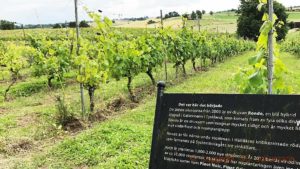 Swedish wine producers have created a new trade association called Swedish Trade Organization for Oenology & Viticulture (SBOV). Emma Serner, the founder of Långmyre Winery on the island of Gotland, is the new association president.
Swedish wine producers have created a new trade association called Swedish Trade Organization for Oenology & Viticulture (SBOV). Emma Serner, the founder of Långmyre Winery on the island of Gotland, is the new association president. The International Organisation of Vine and Wine (OIV) has presented preliminary figures for the 2021 harvest for the southern hemisphere. In the April Brief, we wrote about Argentina, estimated to produce 10.1 million hectolitres, decreasing from 2020 by 6.4%. Neighbouring Chile produced 11.9 million hl. This is an increase of 15% from 2020, which was a challenging year with low yields due to frost and extreme drought. The winter of 2020 offered long-awaited rain. It even rained in January, which is very rare in Chile.
The International Organisation of Vine and Wine (OIV) has presented preliminary figures for the 2021 harvest for the southern hemisphere. In the April Brief, we wrote about Argentina, estimated to produce 10.1 million hectolitres, decreasing from 2020 by 6.4%. Neighbouring Chile produced 11.9 million hl. This is an increase of 15% from 2020, which was a challenging year with low yields due to frost and extreme drought. The winter of 2020 offered long-awaited rain. It even rained in January, which is very rare in Chile.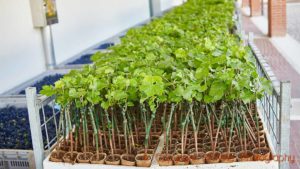 Which rootstock you choose for grafting does not affect the taste of the wine. But the rootstock provides the roots, so it must be compatible with the soil and the local climate. As part of the fight against climate change, CIVB, the Burgundy Producers’ Association, is now helping growers to choose suitable rootstocks. In the future, it will be essential to select rootstocks with good resistance to drought, says CIVB. An advantage is also a rootstock that gives a later budding, meaning that the vine is better equipped to withstand spring frost. A three-year research project called RootBourgogne has identified ten promising rootstocks.
Which rootstock you choose for grafting does not affect the taste of the wine. But the rootstock provides the roots, so it must be compatible with the soil and the local climate. As part of the fight against climate change, CIVB, the Burgundy Producers’ Association, is now helping growers to choose suitable rootstocks. In the future, it will be essential to select rootstocks with good resistance to drought, says CIVB. An advantage is also a rootstock that gives a later budding, meaning that the vine is better equipped to withstand spring frost. A three-year research project called RootBourgogne has identified ten promising rootstocks.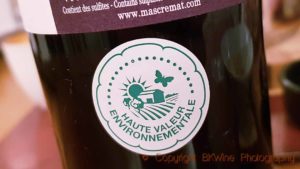 Customers want to make sustainable choices, and therefore Systembolaget (the Swedish alcohol retail monopoly) will introduce its own sustainability label in 2022. This was announced by Ulf Sjödin, category manager at Systembolaget, during a digital press conference. “We have many customers who want help, and we want to make it easy to find sustainable products”. Systembolaget’s sustainability label will consist of four parameters. All four must be met for the wine to have the label.
Customers want to make sustainable choices, and therefore Systembolaget (the Swedish alcohol retail monopoly) will introduce its own sustainability label in 2022. This was announced by Ulf Sjödin, category manager at Systembolaget, during a digital press conference. “We have many customers who want help, and we want to make it easy to find sustainable products”. Systembolaget’s sustainability label will consist of four parameters. All four must be met for the wine to have the label.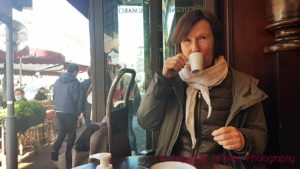 France’s vibrant café and restaurant life has begun to return to normal. The outdoor cafes opened on May 19, and on June 9, we are also allowed to sit inside. The French are happy. According to a survey, they appreciate being able to sit on an outdoor café terrace more than going to the cinema, theatre or shopping. There were many (we among them) who defied heavy rain clouds on May 19 and sat happily at a local café.
France’s vibrant café and restaurant life has begun to return to normal. The outdoor cafes opened on May 19, and on June 9, we are also allowed to sit inside. The French are happy. According to a survey, they appreciate being able to sit on an outdoor café terrace more than going to the cinema, theatre or shopping. There were many (we among them) who defied heavy rain clouds on May 19 and sat happily at a local café.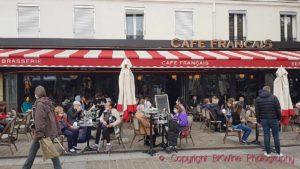 A traditional café in France opens at 7 in the morning. If you are hungry, you can usually have a croissant or a “tartine”, a half split baguette with butter or jam. Later in the morning, the croissants typically run out. Lunch service is between 12 and 14.30. After lunch, you come for coffee or a drink. Some cafés close at 8 pm; others also serve dinner. Today, of course, there are all sorts of variations of the traditional French café.
A traditional café in France opens at 7 in the morning. If you are hungry, you can usually have a croissant or a “tartine”, a half split baguette with butter or jam. Later in the morning, the croissants typically run out. Lunch service is between 12 and 14.30. After lunch, you come for coffee or a drink. Some cafés close at 8 pm; others also serve dinner. Today, of course, there are all sorts of variations of the traditional French café.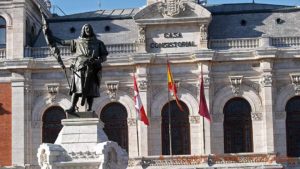 Alejandro Fernández, the founder of the Spanish top wine Pesquera, died on May 22, at the age of 88. When Pesquera appeared, the Ribera del Duero changed. Although the prestigious estate of Vega Sicilia had been long in existence, Pesquera made the region known to the wine-drinking public. Alejandro Fernández made the first vintage of his wine in 1975. He wanted to create powerful, rich wines from tempranillo locally called tinta del país. Thanks to him, Ribera del Duero received its DO in 1982, the same year that Robert Parker gave Pesquera high points, and the wine’s international fame gained momentum.
Alejandro Fernández, the founder of the Spanish top wine Pesquera, died on May 22, at the age of 88. When Pesquera appeared, the Ribera del Duero changed. Although the prestigious estate of Vega Sicilia had been long in existence, Pesquera made the region known to the wine-drinking public. Alejandro Fernández made the first vintage of his wine in 1975. He wanted to create powerful, rich wines from tempranillo locally called tinta del país. Thanks to him, Ribera del Duero received its DO in 1982, the same year that Robert Parker gave Pesquera high points, and the wine’s international fame gained momentum.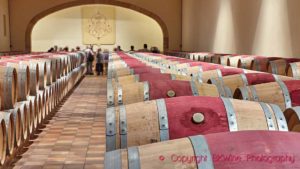 A definite sign of spring is the start of the Bordeaux primeur campaign in April. Now, several chateaux have also “released” their primeur prices for the 2020 vintage. We have seen both increases and reductions in prices compared with 2019. Overall, producers and critics agreed that it is a good vintage, remarkable in some places. But it was a year with some challenges.
A definite sign of spring is the start of the Bordeaux primeur campaign in April. Now, several chateaux have also “released” their primeur prices for the 2020 vintage. We have seen both increases and reductions in prices compared with 2019. Overall, producers and critics agreed that it is a good vintage, remarkable in some places. But it was a year with some challenges.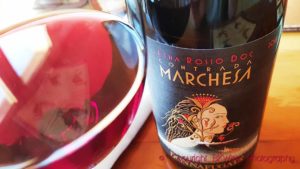 The spotlight is on Etna at the moment. Making wine on an active volcano must be special and, at times, even adventurous. Lava came pouring out of Etna earlier this year. Donnafugata, a well-known Sicilian wine producer, started making wine here in 2016. They discovered an incredible variety of soils, microclimates and growing conditions. Etna is a small but fascinating wine region. We met the team from Donnafugata on Zoom to hear their story.
The spotlight is on Etna at the moment. Making wine on an active volcano must be special and, at times, even adventurous. Lava came pouring out of Etna earlier this year. Donnafugata, a well-known Sicilian wine producer, started making wine here in 2016. They discovered an incredible variety of soils, microclimates and growing conditions. Etna is a small but fascinating wine region. We met the team from Donnafugata on Zoom to hear their story.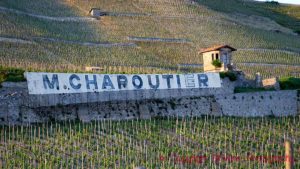 The house M. Chapoutier was founded in the 19th century and has always been respected for its good quality. But the real leap from good quality to exceptional was taken when the dynamic Michel took over the lead in 1990. He initiated a series of changes that have made Chapoutier one of France’s most famous and renowned wine producers. The attention does not only come from the high-quality wines but also, for example, from the introduction of Braille on the labels, from the vineyards being managed biodynamically, from the fact that money is collected for leukaemia patients and much more.
The house M. Chapoutier was founded in the 19th century and has always been respected for its good quality. But the real leap from good quality to exceptional was taken when the dynamic Michel took over the lead in 1990. He initiated a series of changes that have made Chapoutier one of France’s most famous and renowned wine producers. The attention does not only come from the high-quality wines but also, for example, from the introduction of Braille on the labels, from the vineyards being managed biodynamically, from the fact that money is collected for leukaemia patients and much more.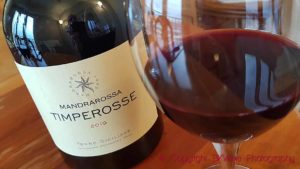 Settesoli means “seven suns”. And for seven years, the growers of the newly formed Sicilian cooperative Settesoli waited patiently before making their first wine. They had started planting the vines in 1958 on land where wheat, lemons and cotton had previously been grown. They were a group of 68 growers in Menfi, in southwestern Sicily, who had joined forces. By the time of the first harvest in 1965, they were already 302. Today, Cantina Settesoli has 2,000 members and over 6,000 hectares of vineyards. The headquarters are still in Menfi. The initiative in 1958 was successful, and the wines are exported to over 40 countries worldwide.
Settesoli means “seven suns”. And for seven years, the growers of the newly formed Sicilian cooperative Settesoli waited patiently before making their first wine. They had started planting the vines in 1958 on land where wheat, lemons and cotton had previously been grown. They were a group of 68 growers in Menfi, in southwestern Sicily, who had joined forces. By the time of the first harvest in 1965, they were already 302. Today, Cantina Settesoli has 2,000 members and over 6,000 hectares of vineyards. The headquarters are still in Menfi. The initiative in 1958 was successful, and the wines are exported to over 40 countries worldwide.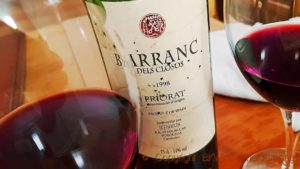 Mas Igneus in Priorat has long been a favourite of ours. In 2020 the estate changed owners and in 2019 a new winemaker had arrived at the estate, Daniel Cuesta. Changes are inevitable with new owners and a new winemaker. After having tasted new and old vintages, however, I feel that the future for Mas Igneus looks good. I discovered some exciting wines. A talk with Daniel revealed his thoughts and philosophy for making wine in Priorat.
Mas Igneus in Priorat has long been a favourite of ours. In 2020 the estate changed owners and in 2019 a new winemaker had arrived at the estate, Daniel Cuesta. Changes are inevitable with new owners and a new winemaker. After having tasted new and old vintages, however, I feel that the future for Mas Igneus looks good. I discovered some exciting wines. A talk with Daniel revealed his thoughts and philosophy for making wine in Priorat. We received an email the other day saying “you’re on Feedspot’s list of ‘Top Wine Magazines & Publications To Follow in 2021’”. Really? Yes, and not only that. BKWine Magazine ranks as number four from the top, after Wine Enthusiast Magazine, Wine Turtle and Wine Spectator in the Feedspot ranking. Feedspot ranks sites based on a number of criteria, like relevancy, neutrality (not being linked to a brand), publishing frequency, domain authority and a number of other factors. We are certainly very proud and happy to be in one of the top spots in the Feedspot ranking online wine magazines and wine sites. Thank you, Feedspot team.
We received an email the other day saying “you’re on Feedspot’s list of ‘Top Wine Magazines & Publications To Follow in 2021’”. Really? Yes, and not only that. BKWine Magazine ranks as number four from the top, after Wine Enthusiast Magazine, Wine Turtle and Wine Spectator in the Feedspot ranking. Feedspot ranks sites based on a number of criteria, like relevancy, neutrality (not being linked to a brand), publishing frequency, domain authority and a number of other factors. We are certainly very proud and happy to be in one of the top spots in the Feedspot ranking online wine magazines and wine sites. Thank you, Feedspot team. Now it is getting more and more tempting to have a glass of white wine for an aperitif. Or maybe with the food. The days are getting longer and temperatures rise. A source for brilliant and fresh white wines that is perhaps a little unexpected is Portugal, and in Portugal for example the Vinho Verde wine region. Sven-Olof Johansson went to taste a whole series of excellent white wines from Portugal, from Anselmo Mendes and others, at Cork wine bar. Here is a selection.
Now it is getting more and more tempting to have a glass of white wine for an aperitif. Or maybe with the food. The days are getting longer and temperatures rise. A source for brilliant and fresh white wines that is perhaps a little unexpected is Portugal, and in Portugal for example the Vinho Verde wine region. Sven-Olof Johansson went to taste a whole series of excellent white wines from Portugal, from Anselmo Mendes and others, at Cork wine bar. Here is a selection.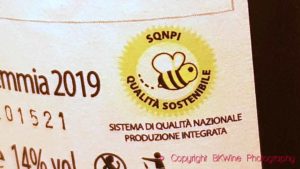 We often point out that it is easy to recognize an organic wine, at least in Europe. All you have to do is look for the green EU logo on the label. It is not as easy when it comes to sustainable wines. In recent years, a plethora of different private sustainability certifications has materialized. Common to them all is that the rules are vague. It is, of course, a good thing to work sustainably. Everyone should do it. But that does not stop the consumer from feeling confused.
We often point out that it is easy to recognize an organic wine, at least in Europe. All you have to do is look for the green EU logo on the label. It is not as easy when it comes to sustainable wines. In recent years, a plethora of different private sustainability certifications has materialized. Common to them all is that the rules are vague. It is, of course, a good thing to work sustainably. Everyone should do it. But that does not stop the consumer from feeling confused.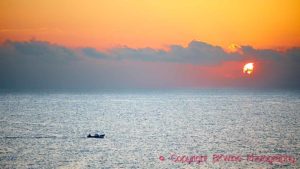 Sometimes it is chance that makes you discover new and exciting wines. An impulse purchase in the wine shop. An unexpected meeting at a wine fair. Someone friend who offers you some new “find”. Or a sign you happen to get a glimpse of from the bus on the way to the airport. Here we get to know Firriato, a big producer in Sicily who recently launched three new wines from Etna, just such a serendipitous acquaintance.
Sometimes it is chance that makes you discover new and exciting wines. An impulse purchase in the wine shop. An unexpected meeting at a wine fair. Someone friend who offers you some new “find”. Or a sign you happen to get a glimpse of from the bus on the way to the airport. Here we get to know Firriato, a big producer in Sicily who recently launched three new wines from Etna, just such a serendipitous acquaintance.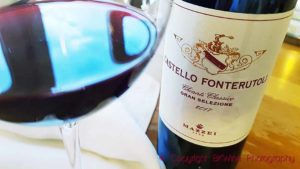 Mazzei is one of Tuscany’s, Italy’s and maybe also the world’s oldest wine producer. The same family still owns it since 1435. It is impressive. We recently spoke with Giovanni Mazzei to hear more about the launch of some of their new wines and new vintages from Tuscany, but also other parts of Italy. We taste several of their wines, including Chianti Classico, a handful of Grand Selezione, a super tuscan, wine from Sicily and a delicious vermentino.
Mazzei is one of Tuscany’s, Italy’s and maybe also the world’s oldest wine producer. The same family still owns it since 1435. It is impressive. We recently spoke with Giovanni Mazzei to hear more about the launch of some of their new wines and new vintages from Tuscany, but also other parts of Italy. We taste several of their wines, including Chianti Classico, a handful of Grand Selezione, a super tuscan, wine from Sicily and a delicious vermentino.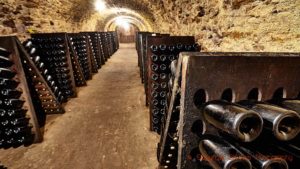 Champagne was born over 300 years ago. It has evolved over time, both how you make a champagne, and the taste. Still today, history imbues many of the aspects of champagne. This is what makes a visit here so fascinating.
Champagne was born over 300 years ago. It has evolved over time, both how you make a champagne, and the taste. Still today, history imbues many of the aspects of champagne. This is what makes a visit here so fascinating. You feel like you know Bordeaux even if you have never been there. You have seen so many photos of the famous chateaux that they feel familiar. But still, nothing beats a visit in real life to Bordeaux, the most famous of all French wine regions.
You feel like you know Bordeaux even if you have never been there. You have seen so many photos of the famous chateaux that they feel familiar. But still, nothing beats a visit in real life to Bordeaux, the most famous of all French wine regions.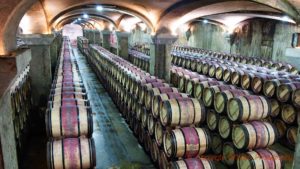 Now you don’t have to choose whether to go to Bordeaux or Champagne. You can go to both of them. This tour combines these two great regions with centuries of history and fame. Some of the world’s most expensive wines are found here. But the producers here do not rest on their laurels. There’s an amazing energy among them.
Now you don’t have to choose whether to go to Bordeaux or Champagne. You can go to both of them. This tour combines these two great regions with centuries of history and fame. Some of the world’s most expensive wines are found here. But the producers here do not rest on their laurels. There’s an amazing energy among them.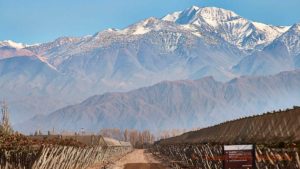 There are vineyards on both sides of the Andes mountain range. It’s very dry in Mendoza on the Argentine side. The wines are full-bodied with an abundance of fruit. They often have a good freshness, thanks to the altitude of the vineyards. On the other side of the mountains, in Chile, the vegetation is, most of the time, greener and lusher. The character of the wines depends on whether the vineyards are located near the mountains or the sea. The Pacific Ocean is cold, and grapes such as pinot noir and sauvignon blanc thrive in the vineyards here. We visit Casablanca and San Antonio, just a few kilometres from the Ocean. In Valle Central, the heart of Chile’s wine industry, we visit Colchagua, known for their fine cabernet sauvignon and carmenère.
There are vineyards on both sides of the Andes mountain range. It’s very dry in Mendoza on the Argentine side. The wines are full-bodied with an abundance of fruit. They often have a good freshness, thanks to the altitude of the vineyards. On the other side of the mountains, in Chile, the vegetation is, most of the time, greener and lusher. The character of the wines depends on whether the vineyards are located near the mountains or the sea. The Pacific Ocean is cold, and grapes such as pinot noir and sauvignon blanc thrive in the vineyards here. We visit Casablanca and San Antonio, just a few kilometres from the Ocean. In Valle Central, the heart of Chile’s wine industry, we visit Colchagua, known for their fine cabernet sauvignon and carmenère.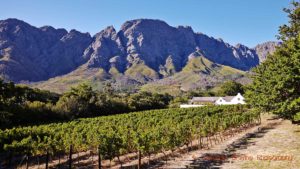 South Africa’s wines have come incredibly far in the last 25 years. Initially, South Africa was associated with pleasant but unpretentious wines. These wines still exist; maybe they even dominate. But on this tour, we will show you what ambitious producers can achieve in this incredibly beautiful wine country. The landscape is unforgettable. In February, the grapes are ripe. Some producers have already started to harvest; others are still waiting for a bit more ripeness. It’s a great time to be in the vineyards.
South Africa’s wines have come incredibly far in the last 25 years. Initially, South Africa was associated with pleasant but unpretentious wines. These wines still exist; maybe they even dominate. But on this tour, we will show you what ambitious producers can achieve in this incredibly beautiful wine country. The landscape is unforgettable. In February, the grapes are ripe. Some producers have already started to harvest; others are still waiting for a bit more ripeness. It’s a great time to be in the vineyards.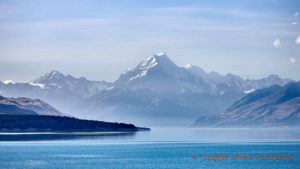 New Zealand is a new wine country. Admittedly, wine was made as early as the 19th century, but the wine industry did not gain momentum until the 1980s. After that, it has grown at an incredible pace. Much thanks to one single grape variety, sauvignon blanc. This variety accounts for 85% of exports, so it is the grape that most people associate with New Zealand. Being in the country, you will discover that there is so much more. The conditions for viticulture are in many ways perfect. It is the coolest of the New World countries, but there is plenty of sunshine and, most of the time, just enough rainfall.
New Zealand is a new wine country. Admittedly, wine was made as early as the 19th century, but the wine industry did not gain momentum until the 1980s. After that, it has grown at an incredible pace. Much thanks to one single grape variety, sauvignon blanc. This variety accounts for 85% of exports, so it is the grape that most people associate with New Zealand. Being in the country, you will discover that there is so much more. The conditions for viticulture are in many ways perfect. It is the coolest of the New World countries, but there is plenty of sunshine and, most of the time, just enough rainfall.





